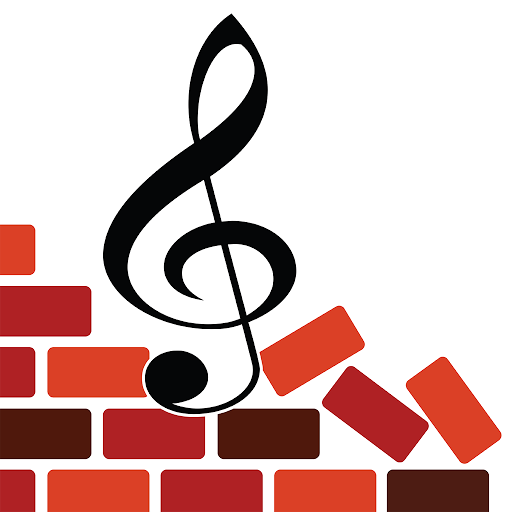Scott A Wolf
age ~43
from White Bear Lake, MN
- Also known as:
-
- Scott Allen Wolf
- Scott A Wold
- Scott Wolfe
- Phone and address:
-
3700 Van Dyke St, Saint Paul, MN 55110
6512461905
Scott Wolf Phones & Addresses
- 3700 Van Dyke St, Saint Paul, MN 55110 • 6512461905
- White Bear Lake, MN
- Holloman Air Force Base, NM
- 8737 Inwood Ave S, Cottage Grove, MN 55016 • 6513980378
- Oakdale, MN
Work
-
Company:Gerdau steel manufacturerJan 2012
-
Position:Bundling pulpit operator
Education
-
School / High School:University of Wisconsin River Falls- River Falls, WI2007
-
Specialities:Bachelor of Science in Business Administration
Skills
Microsoft Word • Excel • Powerpoint • Outlook • SAP • Typing = 60 WPM • Auto Glass Repair and Replacement • Leadership
Resumes

Scott A. Wolf Oakdale, MN
view sourceWork:
Gerdau Steel Manufacturer
Jan 2012 to 2000
Bundling Pulpit Operator Allure Auto Glass
Cottage Grove, MN
Jun 2009 to Dec 2011
Business Owner Safelite Auto Glass
Minneapolis, MN
Aug 2005 to Sep 2008
Auto Glass Technician USAF United States Air Force
Holloman AFB, NM
Jul 2000 to Jul 2004
Armament Systems Journeyman
Jan 2012 to 2000
Bundling Pulpit Operator Allure Auto Glass
Cottage Grove, MN
Jun 2009 to Dec 2011
Business Owner Safelite Auto Glass
Minneapolis, MN
Aug 2005 to Sep 2008
Auto Glass Technician USAF United States Air Force
Holloman AFB, NM
Jul 2000 to Jul 2004
Armament Systems Journeyman
Education:
University of Wisconsin River Falls
River Falls, WI
2007 to 2008
Bachelor of Science in Business Administration Inver Hills Community College
Inver Grove Heights, MN
2004 to 2006
Associates of Science in Contemporary Business
River Falls, WI
2007 to 2008
Bachelor of Science in Business Administration Inver Hills Community College
Inver Grove Heights, MN
2004 to 2006
Associates of Science in Contemporary Business
Skills:
Microsoft Word, Excel, Powerpoint, Outlook, SAP, Typing = 60 WPM, Auto Glass Repair and Replacement, Leadership
License Records
Scott L Wolf
License #:
7025061 - Active
Category:
EMS Licensing
Issued Date:
Nov 28, 2015
Expiration Date:
Jun 30, 2018
Type:
EMT-Basic
Scott Eugene Wolf
License #:
65060 - Expired
Category:
Nursing Support
Issued Date:
Nov 3, 2009
Effective Date:
Nov 14, 2011
Expiration Date:
Nov 3, 2011
Type:
Medication Aide
Isbn (Books And Publications)

Painting on Light: Drawings and Stained Glass in the Age of Durer and Holbein
view sourceAuthor
Scott C. Wolf
ISBN #
0892365781
Name / Title
Company / Classification
Phones & Addresses
Vice President
Wci Realty, Inc
Managing Director
The Columns Resource of Northwestern Mutual
Business Services
Business Services
3600 Minnesota Dr, Minneapolis, MN 55435
NATIONAL COMMISSIONING SERVICES, LLC
WOLF REALTY INVESTMENTS, LTD
FIRESTONE, BREHM, WOLF, WHITNEY & YOUNG LLP
WOLF'S MEDIA LLC
SCOTT T. WOLF, O.D., LLC
IZZABELLA'S PIZZERIA, LLC
Us Patents
-
Delivery Methods For Left Ventricular Conduit
view source -
US Patent:6387119, May 14, 2002
-
Filed:Mar 2, 2001
-
Appl. No.:09/796590
-
Inventors:Scott J. Wolf - Minneapolis MN
Peter J. Wilk - New York NY
Vincent Pompili - Chagrin Falls OH -
Assignee:Percardia, Inc. - Merrimack NH
-
International Classification:A61F 206
-
US Classification:623 111, 623 1211, 606108, 606194, 128898
-
Abstract:Described herein are various methods and apparatuses for delivering stents or conduits and other devices into the myocardium of a patient. One preferred stent delivery system provides access to the insertion site in the myocardium by advancing a delivery catheter through a blockage in a coronary artery, or around the blockage through a coronary vein or through a channel or tunnel formed around the blockage. In one embodiment, once the distal end of the delivery catheter is adjacent the myocardium, an angled bend is created in the catheter by actuating expandable steering guides mounted to the catheter which cooperate with the walls of the blood vessel to cause the catheter to turn. Then, a guidewire is advanced through the delivery catheter and into the myocardium. In another embodiment, a tip-deflecting pull wire extends from the distal end of the delivery catheter which may be actuated to turn towards and then inserted into the myocardium. In another embodiment, an exit port facing the insertion site is provided within the catheter or a balloon mounted on the catheter so that a guidewire may be directed through a lumen and out the exit port into the:.
-
Valve Designs For Left Ventricular Conduits
view source -
US Patent:6641610, Nov 4, 2003
-
Filed:Aug 4, 1999
-
Appl. No.:09/368393
-
Inventors:Scott J. Wolf - Minneapolis MN
Greg R. Furnish - Louisville KY
Todd A. Hall - Goshen KY
David Y. Phelps - Louisville KY
Peter J. Wilk - New York NY
Nancy C. Briefs - Nashua NH
William Santamore - Medford NJ
Daniel Burkhoff - Tenafly NJ -
Assignee:Percardia, Inc. - Nashua NH
-
International Classification:A61F 206
-
US Classification:623 13, 606153
-
Abstract:Disclosed is a conduit that provides a bypass around a stenosis or occlusion in a coronary artery. The conduit is adapted to be positioned in the myocardium to provide a passage for blood to flow from a heart chamber to a coronary artery, at a site distal to the blockage or stenosis in the coronary artery. The conduit has a one-way valve positioned therein to prevent the backflow of blood from the coronary artery into the heart chamber.
-
Delivery Methods For Left Ventricular Conduit
view source -
US Patent:6694983, Feb 24, 2004
-
Filed:Mar 8, 2002
-
Appl. No.:10/092916
-
Inventors:Scott J. Wolf - Minneapolis MN
Peter J. Wilk - New York NY
Vincent Pompili - Chagrin Falls OH -
Assignee:Percardia, Inc. - Merrimack NH
-
International Classification:A61B 1900
-
US Classification:128898, 606108, 606194
-
Abstract:Described herein are various methods and apparatuses for delivering stents or conduits and other devices into the myocardium of a patient. One preferred stent delivery system provides access to the insertion site in the myocardium by advancing a delivery catheter through a blockage in a coronary artery, or around the blockage through a coronary vein or through a channel or tunnel formed around the blockage. In one embodiment, once the distal end of the delivery catheter is adjacent the myocardium, an angled bend is created in the catheter by actuating expandable steering guides mounted to the catheter which cooperate with the walls of the blood vessel to cause the catheter to turn. Then, a guidewire is advanced through the delivery catheter and into the myocardium. In another embodiment, a tip-deflecting pull wire extends from the distal end of the delivery catheter which may be actuated to turn towards and then inserted into the myocardium. In another embodiment, an exit port facing the insertion site is provided within the catheter or a balloon mounted on the catheter so that a guidewire may be directed through a lumen and out the exit port into the myocardium.
-
Left Ventricular Conduits To Coronary Arteries And Methods For Coronary Bypass
view source -
US Patent:6949080, Sep 27, 2005
-
Filed:Aug 15, 2002
-
Appl. No.:10/218916
-
Inventors:Scott J. Wolf - Minneapolis MN, US
Greg R. Furnish - Louisville KY, US
Todd A. Hall - Goshen KY, US
David Y. Phelps - Louisville KY, US
Peter J. Wilk - New York NY, US
Nancy Briefs - Nashua NH, US
William Santamore - Medford NJ, US
Daniel Burkhoff - Tenafly NJ, US
Simon Furnish - Louisville KY, US
Stephen Evans - Westford MA, US
Roger D. Kamm - Weston MA, US
Richard Renati - San Jose CA, US
Gerald Melsky - Lexington MA, US
Eun Bo Shim - Kyungbuk, KR -
Assignee:Percardia, Inc. - Nashua NH
-
International Classification:A61M037/00
A61F011/00
A61F002/06
A61F002/00
A61B017/08 -
US Classification:604 8, 606153, 606154, 606108, 623 115, 623 138, 424426
-
Abstract:A stent suitable for implantation in myocardial tissue to enhance perfusion therein may include a tubular member having first and second ends and a lumen. The first end of the stent may be configured to pierce myocardial tissue and the lumen may be configured to be placed in flow communication with a coronary vessel. The stent may further include a means for retaining the tubular member within the myocardial tissue. A method for implanting the stent may include positioning the first end of the stent at a desired implantation site and applying force to the second end of the stent to implant the stent within the myocardial tissue. The method may further include engaging the means for retaining with the myocardial tissue to retain the stent in position.
-
Valve Designs For Left Ventricular Conduits
view source -
US Patent:7011095, Mar 14, 2006
-
Filed:Jun 18, 2003
-
Appl. No.:10/463798
-
Inventors:Scott J. Wolf - Minneapolis MN, US
Peter J. Wilk - New York NY, US
Nancy M. Briefs - Nashua NH, US -
Assignee:Percardia, Inc. - Merrimack NH
-
International Classification:A61F 2/06
A61B 17/08 -
US Classification:128898, 606153
-
Abstract:Disclosed is a conduit that provides a bypass around a stenosis or occlusion in a coronary artery. The conduit is adapted to be positioned in the myocardium to provide a passage for blood to flow from a heart chamber to a coronary artery, at a site distal to the blockage or stenosis in the coronary artery. The conduit has a one-way valve positioned therein to prevent the backflow of blood from the coronary artery into the heart chamber.
-
Left Ventricular Conduits To Coronary Arteries And Methods For Coronary Bypass
view source -
US Patent:20040147869, Jul 29, 2004
-
Filed:Oct 9, 2003
-
Appl. No.:10/681323
-
Inventors:Scott Wolf - Minneapolis MN, US
Greg Furnish - Louisville KY, US
Todd Hall - Goshen KY, US
David Phelps - Louisville KY, US
Peter Wilk - New York NY, US
Nancy Briefs - Nashua NH, US
William Santamore - Medford NJ, US
Daniel Burkhoff - Tenafly NJ, US
Simon Furnish - Louisville KY, US
Stephen Evans - Westford MA, US
Roger Kamm - Weston MA, US
Richard Renad - San Jose CA, US
Gerald Melsky - Lexington MA, US
Eun Shim - Kumi, KR -
Assignee:Percardia, Inc.
-
International Classification:A61M005/00
A61F011/00 -
US Classification:604/008000, 606/108000
-
Abstract:Left ventricular conduits and related methods are disclosed for achieving bypass of a partially or completely occluded coronary artery. More broadly, conduits for allowing communication of bodily fluids from one portion of a patient's body to another and related methods are disclosed, including conduits for forming a blood flow path from a chamber of the heart to a vessel or from one vessel to another. In other embodiments, the conduits achieve a coronary artery bypass by allowing blood communication between the left ventricle and the coronary artery or between a proximal portion of the coronary artery and a distal portion of the coronary artery. The conduits may be placed completely through the heart wall or extend only partially therein. Conduits may take on a variety of configurations for allowing the control of blood flow therethrough, including curved or tapered shapes. The conduits may also follow a variety of paths, including direct transmyocardial communication between the left ventricle and the coronary artery, or through the myocardium and into the intrapericardial space and then into the coronary artery. The conduits may be implanted through a variety of methods, including minimally invasive techniques. Also disclosed are various preferred embodiments of medical devices and related methods for implanting the conduits including rigid delivery rods for penetrating bodily tissue. The delivery rods may be solid, thus being trocar-like, or hollow to form a self-implantable conduit. Other preferred rod embodiments may have the conduits mounted thereon and take the form of a stylet or the like. The conduits may be one-piece, continuous conduits or made up of a number of plural sections joined together. Disclosures of various anastomosis devices are provided.
-
Valve Designs For Left Ventricular Conduits
view source -
US Patent:20060111660, May 25, 2006
-
Filed:Dec 15, 2005
-
Appl. No.:11/300513
-
Inventors:Scott Wolf - Minneapolis MN, US
Greg Furnish - Louisville KY, US
Todd Hall - Goshen KY, US
David Phelps - Louisville KY, US
Peter Wilk - New York NY, US
Nancy Briefs - Nashua NH, US
William Santamore - Medford NJ, US
Daniel Burkhoff - Tenafly NJ, US -
International Classification:A61M 39/24
A61F 2/04 -
US Classification:604009000, 623023680, 623001240
-
Abstract:Disclosed is a conduit that provides a bypass around a stenosis or occlusion in a coronary artery. The conduit is adapted to be positioned in the myocardium to provide a passage for blood to flow from a heart chamber to a coronary artery, at a site distal to the blockage or stenosis in the coronary artery. The conduit has a one-way valve positioned therein to prevent the backflow of blood from the coronary artery into the heart chamber.
Plaxo

Scott Wolf
view sourceDenver, CO

Scott Wolf
view sourcePresident at Greater Boston Properties

Scott Wolf
view sourceStone Lion Management
Classmates

Scott Wolf
view sourceSchools:
Leeds High School Leeds ND 1989-1993
Community:
Sheila Stevenson, Carol Bothun, Kacy Slyt

Scott Wolf
view sourceSchools:
mcaskey high school Lancaster PA 1979-1983
Community:
Jeff Heagy, Tyrone Williams

Scott Wolf
view sourceSchools:
Southwest Elementary School Geneseo IL 1983-1986, Northside Elementary School Geneseo IL 1986-1988, Millikin Elementary School Geneseo IL 1988-1990, Geneseo Junior High School Geneseo IL 1990-1992
Community:
Angela Rush, Bobbi Patterson, Sheryl Wagoner, Norman Haney

Scott Wolf
view sourceSchools:
Foran High School Milford CT 2000-2004
Community:
Lisa Mollica, Stephen Romanoff

Scott Wolf
view sourceSchools:
Springside High School Philadelphia PA 1976-1980, Chestnut Hill Academy Philadelphia PA 1976-1980
Community:
Jeffery Hawkins, Colin Costello, Kevin Mclemore

Scott Wolf
view sourceSchools:
Columbia Elementary School Evansville IN 1947-1956

Scott Wolf
view sourceSchools:
Mother of Good Counsel School Milwaukee WI 1956-1964, Jordan High School Milwaukee WI 1964-1967
Community:
Michael Jacobs, Tim Cantwell, Bob Wold, Thomas Hahn

Scott Wolf
view sourceSchools:
Middleton High School Middleton WI 1986-1990
Community:
Bill Werner, Jeff Wipperman, Jan Hartwig
Youtube
Myspace
Googleplus

Scott Wolf
Work:
Doner - Copywriter
Education:
Miami Ad School - Copywriting
Tagline:
Words.

Scott Wolf
Work:
Wiser Cx, LLC - Owner (2011)

Scott Wolf

Scott Wolf

Scott Wolf

Scott Wolf

Scott Wolf

Scott Wolf

Scott Wolf Hernandez
view source
Scott A Wolf
view source
Dan Scott Wolf
view source
Jean Scott Wolf
view source
Scott C Wolf
view source
Scott H Wolf
view source
Scott Wolf
view source
Scott Wolf
view sourceFlickr
Get Report for Scott A Wolf from White Bear Lake, MN, age ~43



















